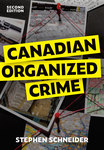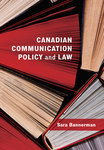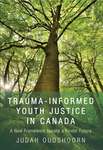We don’t actively support Internet Explorer
It appears that you are using Internet Explorer, which has been discontinued by Microsoft. Support has ended for versions older than 11, and as a result you may face security issues and other problems when using it.
We recommend upgrading to a newer browser such as Firefox, Google Chrome, or Edge for a much better experience across the web.
While this site may work with Explorer, we are not testing and verifying it, so you may run into some trouble or strange looking things.
Ethics and Canadian Law Enforcement
By Richard Parent, Catherine Parent
Overview
Ethics and Canadian Law Enforcement offers a comprehensive overview of law enforcement decision-making procedures in Canada, and evaluates the ethical conduct expected of law enforcement personnel, such as police officers, sheriffs, correctional officers, and private security. Dr. Richard Parent, a police officer for more than 30 years, draws on his professional experience to examine codes of conduct, internal investigations, misconduct and discipline, and the purpose of the civilian review.
This text provides an exceptional overview of the theories, personal morals, values, and tenets of professionalism that lay the foundation for ethical decision-making. Selected topics examine the use of force; on and off-duty challenges; issues of accountability and oversight; the application of issued firearms; diversity in the law enforcement workforce; and the considerations that are unique to law enforcement policies within Indigenous communities.
This accessible resource, which features boxed examples, chapter summaries, key terms, self-evaluation questions, and critical thinking exercises, is ideal for college and university students enrolled in police foundation and criminal justice programs, as well as law enforcement training agencies.
Table of Contents
Introduction 1
Chapter 1 Overview of Ethical and Professional Conduct in Canadian
Law Enforcement 4
A Brief History of Law Enforcement 5 Ethics, Professionalism, and Legitimacy 10 Ethics and Law Enforcement by Private Security 14 Discretion, Power, and Public Service 16 An Overview of Morality and Contemporary Society 19 The Issues of Misconduct and Corruption 22 Responding to Ethical Concerns in Law Enforcement 29
Chapter Summary 34
Key Concepts 35
Links to Further Information 35
Self-Evaluation 36
References 37
Chapter 2 Morals, Ethics, Values, and Ethical Decision Making 39
Ethical Conduct and the Public 40 The Importance of Moral Conduct 44 The Importance of Morals, Ethics, and Values in Law Enforcement 44 Major Ethical Theories and Systems 46 Ethical Dilemmas in Law Enforcement 55 Tools for Resolving Ethical Dilemmas 58
Chapter Summary 63
Key Concepts 63
Links to Further Information 64
Self-Evaluation 64
References 65
Chapter 3: Core Values, Codes of Conduct, and Investigative
Issues 67 Core Values of Law Enforcement 68 Codes of Conduct 70 Ethics and Investigative Issues 73
Chapter Summary 87
Key Concepts 87
Links to Further Information 88
Self-Evaluation 89
References 90
Chapter 4: The Ethical and Professional Law Enforcement Officer 92
New Recruits: Developing the Ethical and Professional Law Enforcement Officer 93 Promoting Diversity 110 Law Enforcement Training and Ethics 119
Chapter Summary 124 Key Concepts
Links to Further Information 125
Self-Evaluation 126
References 127
Chapter 5: The Law Enforcement Environment: On- and Off-Duty
Challenges 130
Occupational Subculture and the Law Enforcement Officer 131 On- and Off-Duty Challenges 136 Issues Specific to the Law Enforcement Environment 144
Chapter Summary153
Key Concepts 154
Links to Further Information 154
Self-Evaluation 155
References 156
Chapter 6: Decision Making and the Use of Force 158
Law Enforcement and the Use of Force 159 Use of Force: Models and Frameworks 161 The Process of Decision Making and the Use of Force 166 Firearms and the Use of Deadly Force by Law Enforcement in Canada 169 Public Scrutiny and Concerns of Trust 170 Research Surrounding the Use of Force by Law Enforcement 171 The Practice of Using Force by Law Enforcement 176 Similarities and Differences in the Use of Deadly Force 183 The Effect of Community Policing on Occupational Subculture 186 Decision Making and the Pursuit of Fleeing Motor Vehicles 187
Chapter Summary 192
Key Concepts 192
Links to Further Information 193
Self-Evaluation 194
References 195
Chapter 7: Accountability and Oversight 199
Accountability and Oversight in Canada 200 The Birth of Civilian Oversight 207 Professional Standards Units within Police Agencies 209 Commissions of Inquiry 210 Models of Investigation for Allegations of Misconduct 210 Investigating Police Shootings and Allegations of Serious Injury, Death, or Sexual Assault 216 Examples of Civilian Oversight bodies for Serious Allegations 219 The RCMP Complaint and Review Process for All Provinces and Territories 223 The Need for Further Accountability and Oversight 226
Chapter Summary 230
Key Concepts 231
Links to Further Information 231
Self-Evaluation 232
References 233
Chapter 8: Indigenous Peoples and Law Enforcement 236
Indigenous Communities and Law Enforcement 237 Indigenous Law Enforcement Initiatives across Canada 244 Autonomous Indigenous Police Agencies 250 Responding to Events on Indigenous Lands in Ontario 252 Indigenous Communities and Restorative Justice 256
Chapter Summary 259
Key Concepts 260
Links to Further Information 260
Self-Evaluation 261
References 262
Chapter 9: Correctional and Jail Services 265
Correctional Officers and the Process from Arrest to Jail Services 266 Profile of an Offender in Canada 268 Correctional Officer Duties and Responsibilities 270 At-Risk Populations in Correctional Facilities 281 Inside the Walls: Discretion, Respect, and Relationships 287 Public Notification 291
Chapter Summary 293
Key Concepts 294
Links to Further Information 294
Self-Evaluation 295
References 297
Chapter 10: Moving Forward: Fostering an Ethical and Professional
Workplace 299 Investigating and Limiting Law Enforcement Misconduct 300 Organizational Culture: The Importance of Ethical Leadership 311 Oriented towards Customer Service 318
Chapter Summary 322
Key Concepts 322
Links to Further Information 323
Self-Evaluation 324
References 325
Afterword: Building Community Partnerships: Legitimacy, Trust, and
Confidence 328
Index 333













